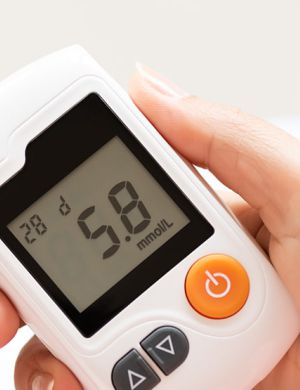
Best Practices for Effective Regulatory Requirements Monitoring
The regulatory environment today is incredibly fast-paced, and the compliance requirements of businesses are unendingly endless, with differences in industries being enormous. From financial services to healthcare, the demand for effective regulatory requirements monitoring has never been greater. This is particularly necessary to avoid penalties, ensure smooth operations, and protect an organization’s very reputation in an ever-changing regulatory landscape. Here are ten best practices that could help your organization to build an effective framework for monitoring regulatory requirements in 2024 and beyond.
1. Establish a Proactive Monitoring Framework
A proactive approach to regulatory requirements monitoring is critical for effective compliance management. Instead of reacting to regulatory updates as they occur, companies should set up a system that anticipates changes and prepares the organization to respond. This involves assigning responsibility for tracking industry-specific regulations, implementing a structured process to review updates, and integrating alerts to notify relevant teams. By establishing a proactive framework, businesses can reduce the risk of non-compliance and stay ahead of emerging requirements.
2. Utilize Regulatory Change Management Software
Investing in regulatory change management software can significantly enhance your organization’s regulatory requirements monitoring process. Such tools offer automated alerts, tracking mechanisms, and real-time updates that streamline compliance efforts. Look for software that integrates with your existing systems and provides dashboards, allowing compliance teams to manage multiple requirements in one place. Regulatory management tools also allow for improved accuracy and faster responses to regulatory changes, reducing the risk of oversights and errors.
3. Set Clear Compliance Goals and KPIs
Defining clear goals and Key Performance Indicators (KPIs) is a cornerstone of effective regulatory requirements monitoring. Having measurable objectives allows you to track progress and assess the effectiveness of your compliance efforts. Typical KPIs might include the time taken to implement regulatory updates, audit completion rates, and the frequency of compliance-related incidents. Setting these benchmarks helps compliance teams identify gaps in the monitoring process and prioritize improvements.
4. Conduct Regular Risk Assessments
Risk assessment is an integral part of regulatory requirements monitoring. By understanding which compliance areas pose the most significant risks, you can prioritize resources and minimize potential liabilities. Conduct regular assessments to identify and analyze regulatory risks across departments, keeping an eye on areas most affected by frequent regulatory changes. Regular risk assessments also provide insights that can refine your organization’s approach to compliance monitoring, ultimately improving overall compliance.
5. Automate Routine Monitoring Tasks
Automation is one of the most effective ways to manage the complexity of regulatory requirements monitoring. Tasks like tracking regulatory updates, generating compliance reports, and setting reminders for upcoming deadlines can be automated, freeing up your compliance team to focus on strategic activities. Tools with automation features can streamline workflows and minimize manual errors, ensuring that your monitoring processes remain consistent and accurate over time.
6. Implement a System for Real-Time Alerts
In dynamic industries like finance, healthcare, and telecommunications, real-time alerts are essential for maintaining compliance. Setting up a system for real-time alerts ensures that your organization is informed of regulatory changes as they happen, giving you a head start in implementing necessary adjustments. These alerts can be customized to focus on specific regulations relevant to your industry, helping to avoid information overload while maintaining a keen focus on pertinent requirements.
7. Conduct Regular Internal Audits and Compliance Reviews
Internal audits are a powerful tool for verifying compliance and identifying areas for improvement in regulatory requirements monitoring. By conducting regular audits, your organization can spot gaps in compliance practices and adjust strategies accordingly. Scheduling routine reviews ensures that your monitoring framework remains effective over time, addressing new challenges and evolving regulatory expectations. Internal audits provide a layer of accountability and drive continuous improvements in compliance processes.
8. Create a Dedicated Compliance Team
Creating a dedicated compliance team is an effective way to manage regulatory requirements monitoring and maintain accountability across the organization. This team should include roles such as compliance officers, risk analysts, and legal advisors, who can collectively oversee compliance tasks. Team members should also receive regular training on new regulations to keep skills current. A well-trained, specialized team enables a more coordinated approach to regulatory monitoring and ensures that compliance responsibilities are handled by experienced professionals.
9. Foster a Culture of Compliance Across the Organization
An organization-wide culture of compliance is essential for effective regulatory requirements monitoring. When compliance is valued at all levels, from executives to entry-level employees, it becomes easier to implement regulatory changes and maintain high standards. Foster this culture by integrating compliance training into onboarding processes and hosting regular training sessions for all employees. By creating a culture that emphasizes the importance of compliance, companies can reduce the risk of non-compliance and ensure that all employees play a role in adhering to regulatory requirements.
10. Review and Update Compliance Processes Regularly
Regulatory landscapes evolve quickly, and companies must adapt their regulatory requirements monitoring processes accordingly. Conduct regular reviews of your compliance procedures to ensure they align with current regulatory standards. Annual or semi-annual reviews help organizations anticipate and address changes proactively. By updating your processes consistently, you maintain flexibility and preparedness, which is essential in staying compliant amidst constantly shifting regulations.
Conclusion
In today’s environment, regulatory oversight is very strict; therefore, a structured approach to monitoring regulatory requirements shall be required. These ten best practices applied by companies will certainly help them reduce compliance risk while improving operational efficiency and being on the right side of the regulatory bodies. Investing in compliance software, instilling a culture of compliance, and leveraging the power of automation are all part of that roadmap for organizations building a resilient, proactive regulatory monitoring framework. Managing regulatory requirements proactively builds the foundation not only for protection of your organization from penalties but also for building trust with stakeholders, employees, and clients.
Don’t miss out! Click here to stay in touch.
Categories
- Biopharma (47)
- Consumer Health (15)
- Cosmetics (8)
- Diagnostics (5)
- Digital Health (8)
- Food (2)
- Medical Device (100)
- OTC (4)
- Regulatory Intelligence (5)
- Standards (41)
Recent Blogs
Get the latest updates from Vistaar

Related Posts
CONNECT WITH US

Let's talk about how DDi can help you







